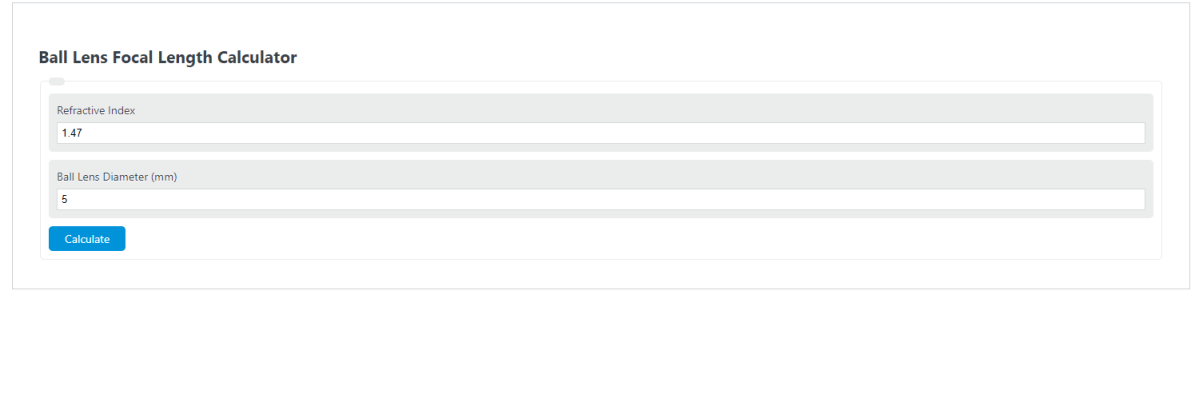Enter the refractive index and the diameter of the ball lens into the calculator to determine the ball lens focal length.
- Focal Width/Length Calculator
- Laser Divergence Calculator
- Thin Lens Calculator
- Contact Lens Vertex Calculator
Ball Lens Focal Length Formula
The following equation is used to calculate the Ball Lens Focal Length.
BLFL = n*D/(4*(n-1))
- Where BLFL is the ball lens focal length
- n is the refractive index
- D is the diameter of the ball lens
What is a Ball Lens Focal Length?
Definition:
A ball lens focal length is defined as the effective focal length from the focal point to the center of a ball lens.
How to Calculate Ball Lens Focal Length?
Example Problem:
The following example outlines the steps and information needed to calculate Ball Lens Focal Length.
First, determine the refractive index. In this example, the refractive index is calculated to be 1.47.
Next, determine the ball lens diameter. For this problem, the diameter is 5mm.
Finally, calculate the ball lens focal length using the formula above:
BLFL = n*D/(4*(n-1))
BLFL = 1.47*5/(4*(1.47-1))
BLFL = 3.909 mm
FAQ
What factors can affect the accuracy of calculating the ball lens focal length?
The accuracy of calculating the ball lens focal length can be affected by factors such as the precision of the refractive index and diameter measurements, the quality of the ball lens material, and environmental conditions like temperature and pressure that might alter the refractive index.
Can the ball lens focal length formula be used for lenses of any size?
While the formula provided is generally applicable for calculating the focal length of ball lenses, it is most accurate for lenses where the diameter is small compared to the radius of curvature of the lens surfaces. For very large lenses or lenses with non-standard shapes, more complex optical formulas may be required.
How does the refractive index of a material influence the focal length of a ball lens?
The refractive index of a material directly influences the focal length of a ball lens because it determines how much the light is bent or refracted when passing through the lens. A higher refractive index means that light is bent more, resulting in a shorter focal length for the same lens diameter. Conversely, a lower refractive index results in a longer focal length.
